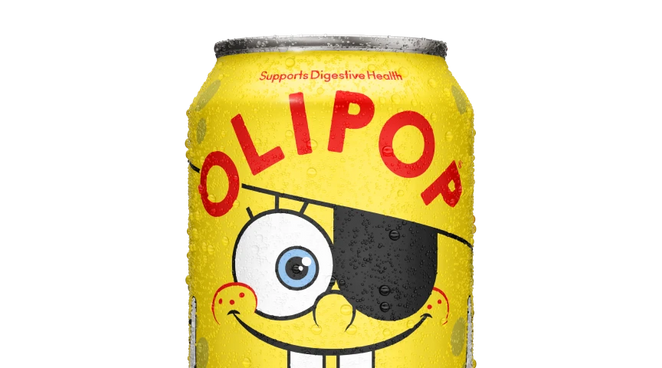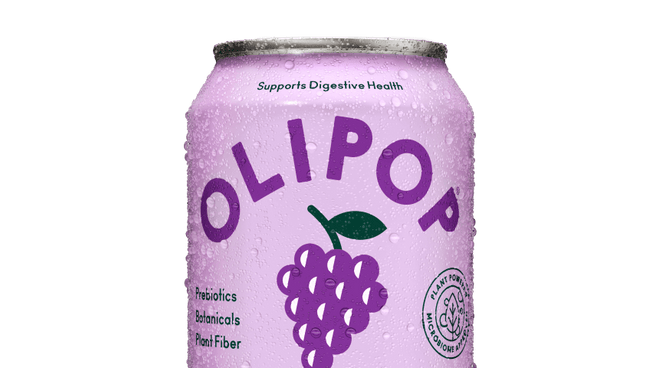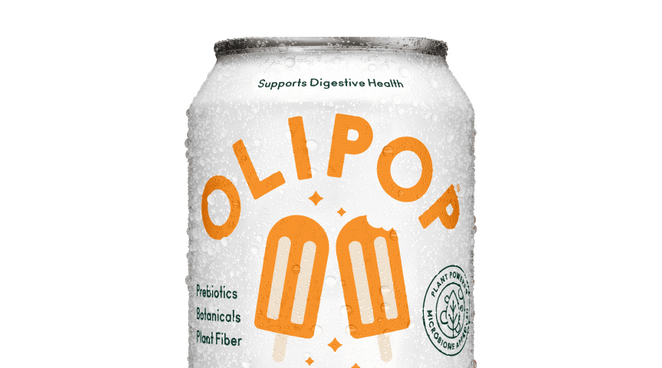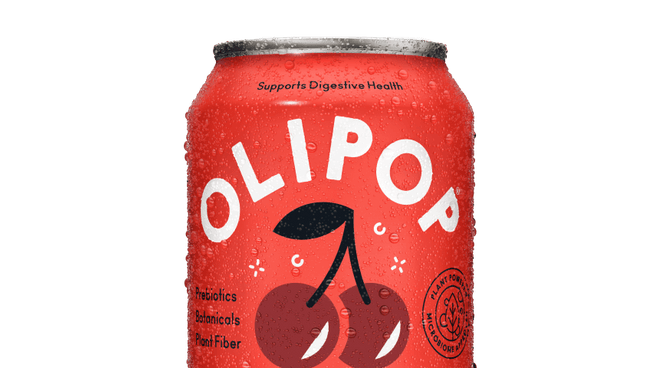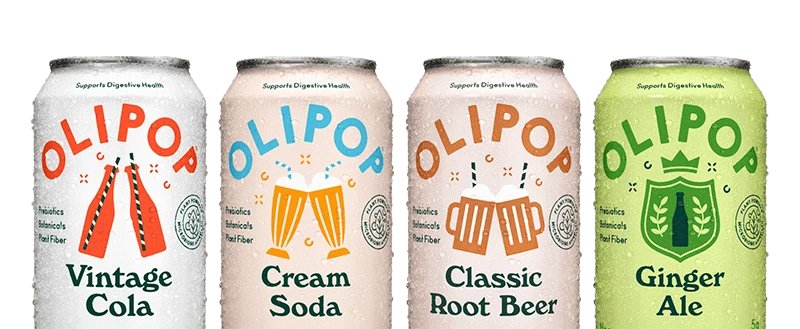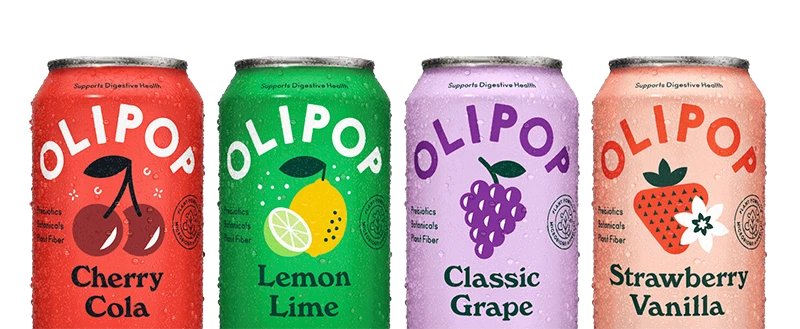Editor's Note: This article is reviewed by Lauren Manaker MS, RDN, LD, a registered dietitian and a paid contributor to OLIPOP. She specializes in digestive health and reviews OLIPOP content for scientific accuracy.
A quick tour of the back labels of the food in your pantry or down the grocery aisle might have you a bit surprised. From high fructose corn syrup to cane sugar to the full dictionary of “-ose” (dextrose, fructose, glucose, lactose, maltose, sucrose, and so on), you’ll find that sugars are everywhere!
When did sugar get so out of control? And why exactly is added sugar so bad for us in the first place? Join us as we dive into the not-so-sugar-sweet details of our added sugar addiction.
What Is Added Sugar?
As the name suggests, added sugar is sugar added in the preparation or processing of a food item. It’s not naturally occurring, but rather it exists to enhance the flavor—like the sugar you add to your coffee or the sugar manufacturers add to your cereal.1 Sugar also gets added to food and beverage items to help extend their shelf life.1
Unlike added sugars, naturally occurring sugars are naturally occurring in foods like the fructose in your apple or the lactose in your milk.2 They weren’t added in – they exist on their own without any human intervention.
Why Is Added Sugar a Problem?
What makes added sugars such a big deal? There are a few reasons why added sugars pose such a huge health risk.
Quantity and Quality
Yes, there’s sugar in both your apple and your soda. But the difference is the type of sugar found in each item. For starters, soda has way more sugar than your apple. There is around 19g of sugar in one apple versus 39g of sugar in one 12-ounce can of soda.
The quality of that food item also matters. An apple has fiber, protein, vitamin C, antioxidants, many other important nutrients. On the other hand, a can of soda offers zero nutritional value.4
Having other nutrients in your food slows down the rate at which your body absorbs and processes sugar. With zero fiber or other nutrients, all that sugar in your can of soda goes immediately into your bloodstream, possibly resulting in a blood sugar spike.4
While glucose is your body’s preferred energy source, the body only needs so much glucose to function. This is what often makes added sugars so dangerous because foods high in sugar may possibly overload your body with too much glucose while offering very few nutrients to regulate that sugar intake.5
Over time, this can lead to insulin resistance, elevated blood sugar, high cholesterol, high blood pressure, and other issues. Plus, when consumed consistently in large quantities, it can raise your risk for health conditions like diabetes, heart disease, liver disease, or other metabolic concerns.5
Empty Calories
Because high-added sugar foods are mostly sugar and have very little nutritional value, this can leave your body feeling unsatisfied.
Plus, the more high-sugar foods you eat, the more your body craves sugar. This is because when we eat sugar the brain releases feel-good hormones called dopamine and serotonin.3 For our hunter/gatherer ancestors, this sweet taste was an important indicator of safe, high-nutrient foods like berries. 3 But in today’s sugar-filled world, it poses more of a potential problem.
High-sugar diets can create a cycle of unhealthy eating. You eat high-sugar foods because you’re hungry, and craving those feel-good emotions. But after the sugar wears off, the feel-good emotions disappear, resulting in you reaching for more high-sugar foods – causing the cycle to continue.6
Breaking free of this cycle means swapping out your high-sugar foods for more nutritious options. But this leads us to another danger of added sugars: they’re not always as easy to avoid as you might think.
Added Sugars are Everywhere
It’s easy to spot the obvious offenders like high-sugar sodas or baked goods. But added sugars hide in foods you wouldn’t always expect. So you might not even realize how much sugar you’re consuming.
Even foods you consider healthy contain large amounts of added sugars, making them no better than your standard junk food. Some sneaky offenders include trail mixes, granola bars, salad dressings, condiments, oatmeal, cereal, breakfast bars, bread, and yogurt, just to name a few.
And all that added sugar can add up pretty quickly. Let’s say you:
- Start your morning with a bowl of cereal
- Then eat a strawberry yogurt with added sugar for your snack
- During your mid-day workout, you enjoy a sports drink
- Then you have a burger with ketchup for dinner along with a can of soda
- And you top it all off with a piece of chocolate cake for dessert
Let’s count up those sugar calories:

- 1 Tablespoon of Tomato Ketchup = 12 Calories of Added Sugars
- 1 Cup of Flavored Cereal = 48 Calories of Added Sugars
- 1 Serving of Flavored Yogurt (6 Ounces) = 72 Calories of Added Sugars
- 1 Chocolate Bar (1.6 Ounces) = 74 Calories of Added Sugars
- 1 Bottle of Sports Drink (20 Ounces) = 122 Calories of Added Sugars
- 1 Can of Regular Soda (12 Fluid Ounces) = 126 Calories of Added Sugars
- 1 Piece of Chocolate Cake = 196 Calories of Added Sugars
In total, that’s 576 calories from added sugar. And a lot of that sugar came from foods you might not have initially considered unhealthy, like your yogurt, beverages, condiments, or breakfast foods.
Added Sugar Consumption: Then and Now
We didn’t always have this sugar overload problem! Back in the 1800s and early 1900s, the average American adult only consumed about 15 grams of sugar per day.8 Yet today, the average American consumes over 70 grams of sugar daily.3 That’s over five times the amount of sugar!
Our diets today are much different than they were back then. As a result, added sugar is much more prevalent than it once was. And, unfortunately, we’re feeling the effects. Since 1970, diabetes has more than tripled. And almost one-third of all U.S. adults suffer from nonalcoholic fatty liver disease, a disease that wasn’t all that common less than 30 years ago.5
Here are a few causes for this sugar craze:
- The discovery of high fructose corn syrup in the 1960s made sugar cheap and easy to add to almost any food item3
- The low-fat push of the 1970s encouraged food manufacturers to create low-fat but high-sugar food options5
- The abundance of ultra processed and pre-packaged foods which are often high in added sugars
- The popularity of sugar-sweetened beverages like soda
- A rise in sedentary lifestyles and larger portion sizes5
In the past few decades, however, we’re starting to see more awareness around the dangers of added sugar and even some government regulations when it comes to sugar labeling and consumption.
With sugar appearing in more and more foods and the rise of troubling health concerns, the Food & Drug Administration, for example, revised the Nutrition Facts label in 2016 to include “Added Sugars”. Now you can spot on the back label how much of the total sugar in your foods is added versus naturally occurring.9
Yet, this kind of intervention does very little to solve our sugar addiction. High-added sugar foods are still a major health concern. But the responsibility for avoiding them falls primarily on the individual.
How to Reduce Added Sugar
According to the United States Department of Agriculture’s 2020-2025 Dietary Guidelines for Americans, most adult Americans should keep their intake of added sugars to less than 10% of your total daily calories. For a 2,000-calorie diet, that would be no more than 200 calories that come from added sugars.10
That’s not a lot of sugar! Here are some ways you can help reduce your sugar intake to stay below that recommended amount:
- Read the back label: Before you drop a food or beverage item in your shopping cart, check the back label and look at the “total” and “added sugars”. One gram of sugar equates to around 4 calories.3 This quick math can help you spot high-sugar food items (especially items you didn’t expect to have much or any sugar!).
- Skip sugar-sweetened beverages: The average can of soda contains around 156 calories from sugar. That’s almost your recommended daily limit of sugar in just one can! By replacing your soda with OLIPOP, you can reduce your added sugar intake in a delicious way.
- Swap for lower-sugar options: Skip the high-sugar food items and opt for lower sugar alternatives. Like plain Greek yogurt instead of flavored, oats instead of pre-made oatmeal, fruit instead of fruit juices, or OLIPOP instead of sugary soda.
- Cut portions in half: There’s no need to go cold turkey! If you find reducing your sugar intake too difficult try cutting your portion size of that sugary drink or food item in half. For example, instead of two spoonfuls of sugar in your coffee, try putting in one. That way you still enjoy the foods you love, while reducing your sugar intake.
- Make more meals at home: Frozen food items and other packaged products may have crazy added sugar levels. You can avoid this by making your frozen favorites at home.11 Plus, they’ll also taste so much better when you do!
Looking for more tips to limit your sugar intake? Head to our blog 5 Tips to Reduce Your Intake of Added Sugar for even more suggestions!
Added Sugar Takeaways
Sugar is a big problem in the standard American diet. But there are ways you can reduce your dependency on sugar and replace those sugar-filled items with lower-sugar options instead, like choosing OLIPOP as your soda-of-choice! Learn more about starting a no-added-sugar diet, tips for cutting back your sugar intake, and more on our Daily Digest blog.
Sources:
- Harvard Health. (2022, January 6). The sweet danger of sugar. https://www.health.harvard.edu/heart-health/the-sweet-danger-of-sugar
- The American Heart Association. (2021, November 2). Added Sugars. https://www.heart.org/en/healthy-living/healthy-eating/eat-smart/sugar/added-sugars
- Heggie, J. (2021, May 3). Life is Sweet: The Sugar Story. Science. https://www.nationalgeographic.com/science/article/partner-content-the-sugar-story
- The American Heart Association. (2022, June 2). How much sugar is too much? https://www.heart.org/en/healthy-living/healthy-eating/eat-smart/sugar/how-much-sugar-is-too-much
- University of California San Francisco. (2020, December 17). Sugar’s Sick Secrets. UCSF Magazine. Retrieved June 30, 2022, from https://magazine.ucsf.edu/sugars-sick-secrets
- How Much Is Too Much? SugarScience. University of California San Francisco. (2018, December 8). https://sugarscience.ucsf.edu/the-growing-concern-of-overconsumption.html#.YO7gHejYqbi
- U.S. Department of Agriculture (USDA) and U.S. Department of Health and Human Services. (2016, March).Dietary Guidelines for Americans, 2015–2020 (8th Edition). https://health.gov/sites/default/files/2019-10/DGA_Cut-Down-On-Added-Sugars.pdf
- Harvard Health. (2011, April 26). Is Fructose Bad For You? https://www.health.harvard.edu/heart-health/is-fructose-bad-for-you-201104262425
- American Heart Association. (2020, February 3). What’s the Difference Between Sugar Free and No Added Sugar? https://www.heart.org/en/healthy-living/healthy-eating/eat-smart/sugar/difference-between-sugar-free-and-no-added-sugar
- U.S. Department of Agriculture and U.S. Department of Health and Human Services.Dietary Guidelines for Americans, 2020-2025. 9th Edition. December 2020. Available at DietaryGuidelines.gov
- Centers for Disease Control and Prevention. (2022, January 13).Know Your Limits for Added Sugars. https://www.cdc.gov/healthyweight/healthy_eating/sugar.html
- Added sugar is sugar added in the preparation or processing of a food item. It does not exist naturally in the food.
- High-added sugar foods are mostly sugar and have very little nutritional value, offering empty calories that do little to satisfy your hunger cravings.
- Tons of food have added sugar, even ones you might not expect like condiments, cereal, breakfast bars, yogurt, and more. By looking for “added sugars” on the back nutrition label, you can help limit your added sugar intake.








